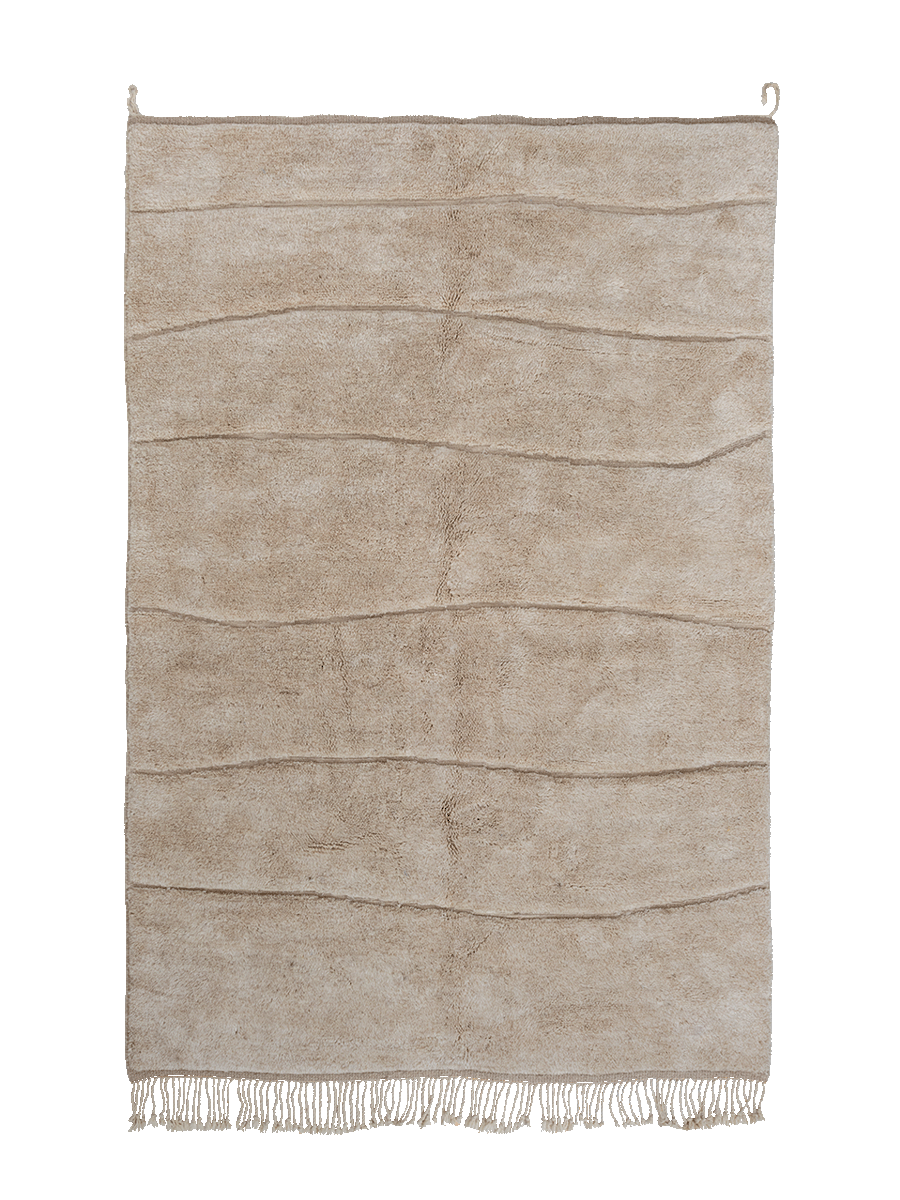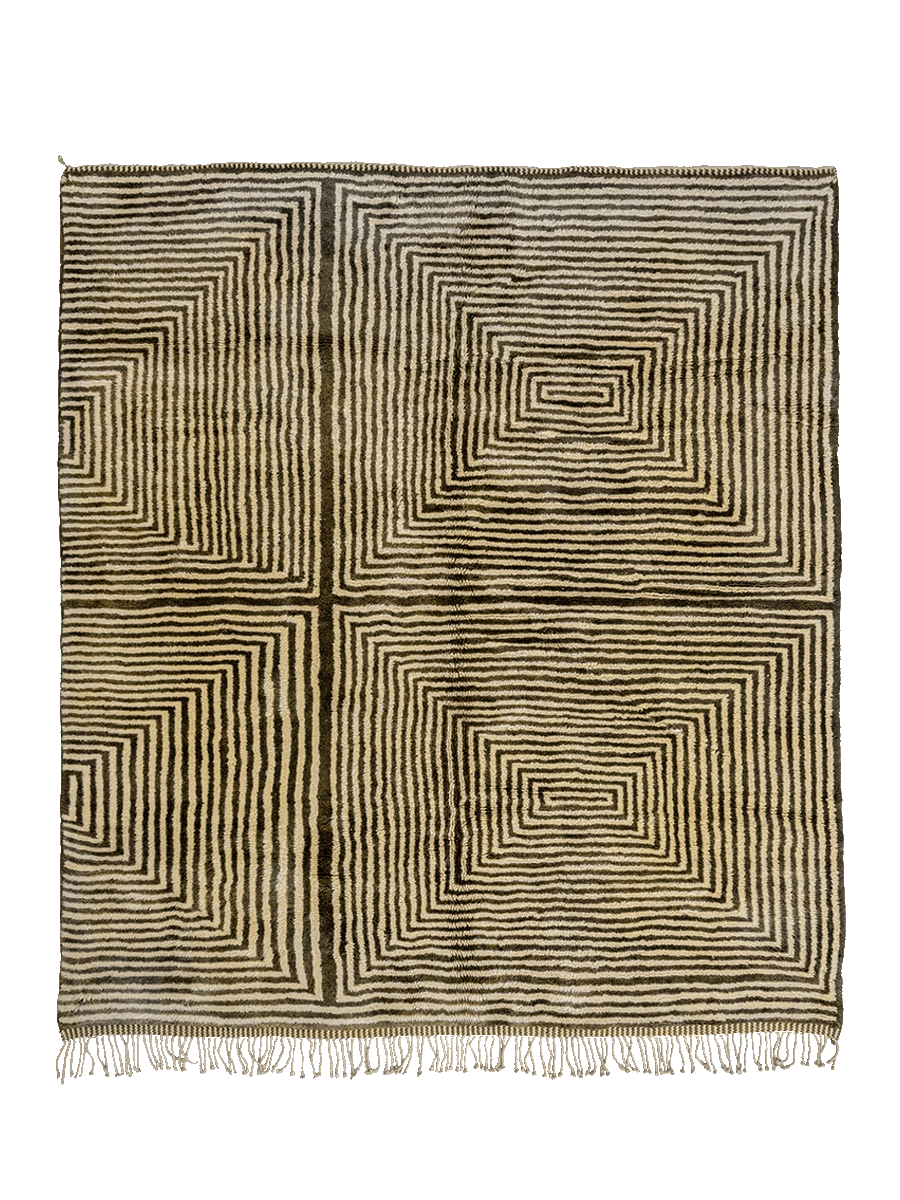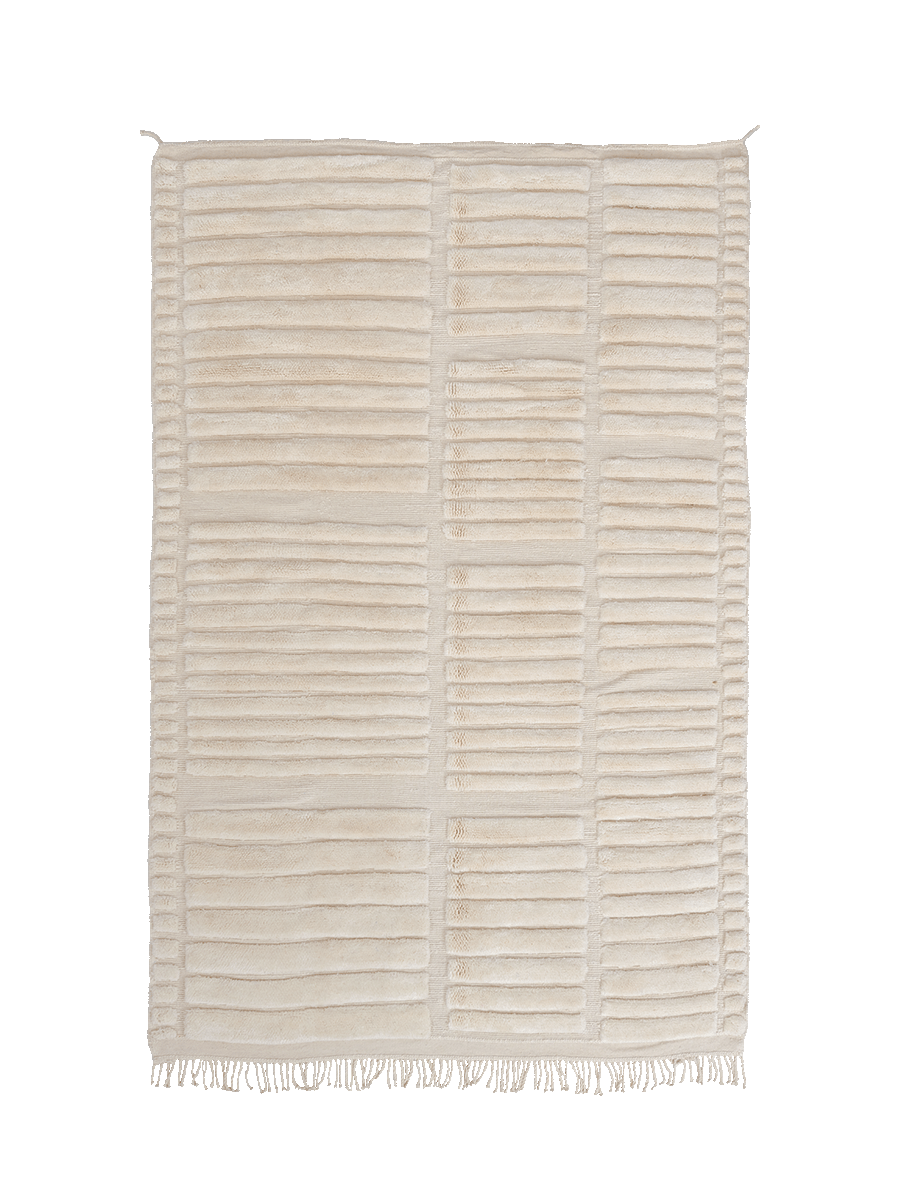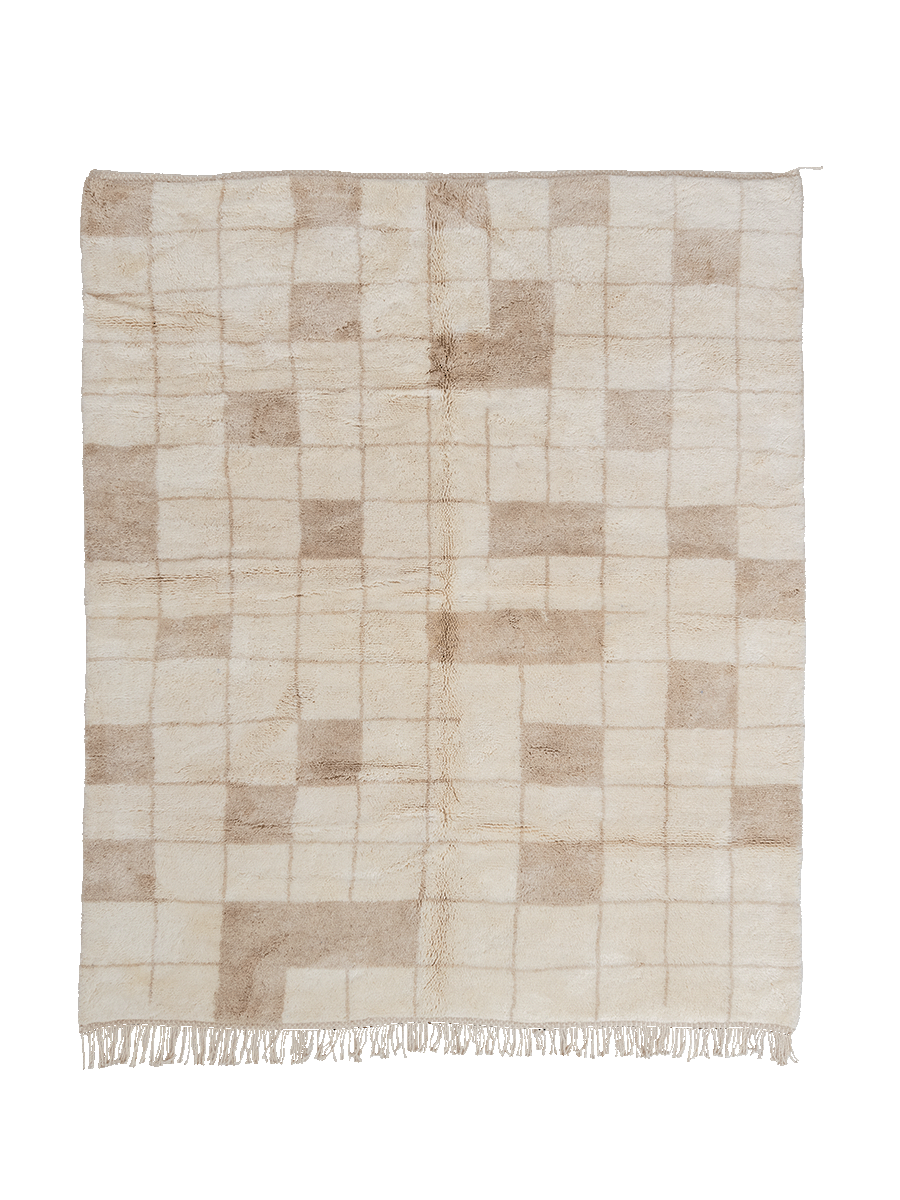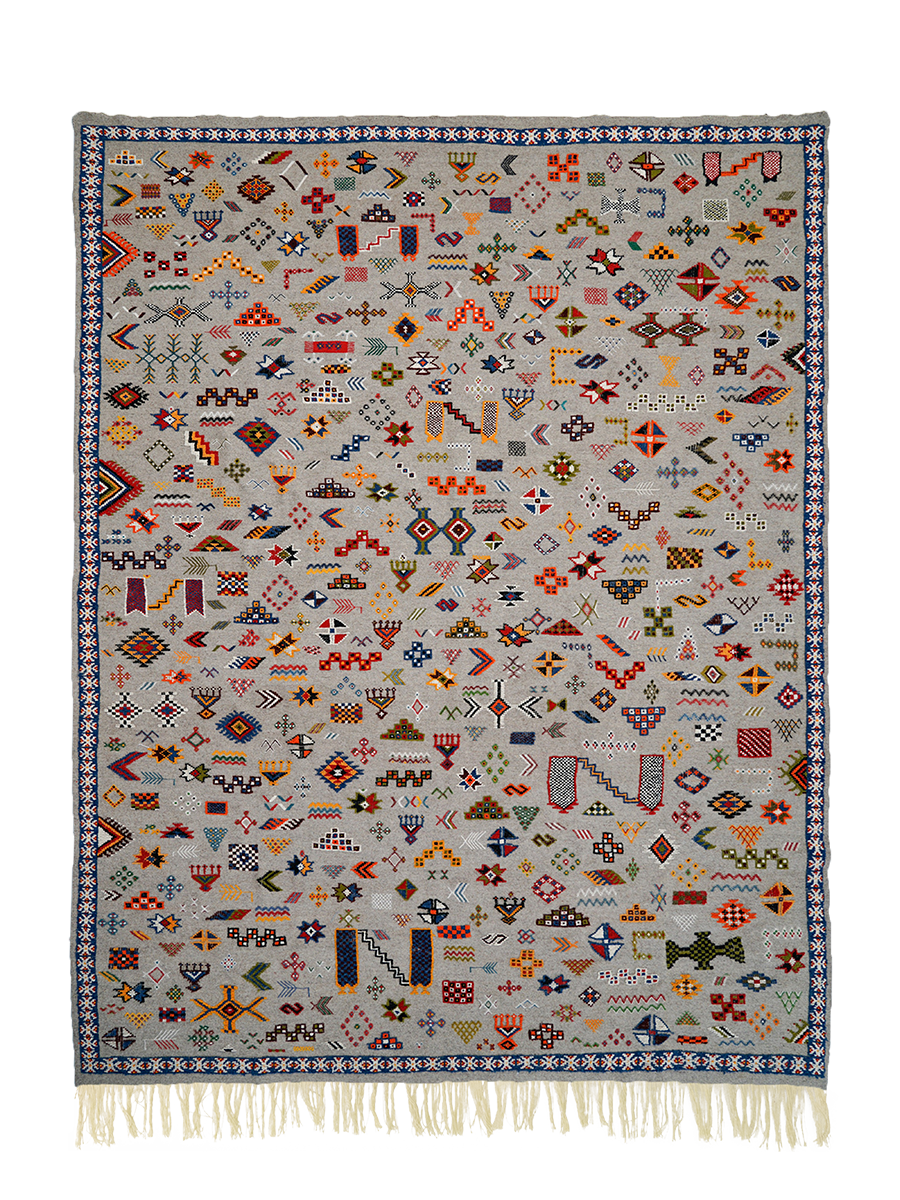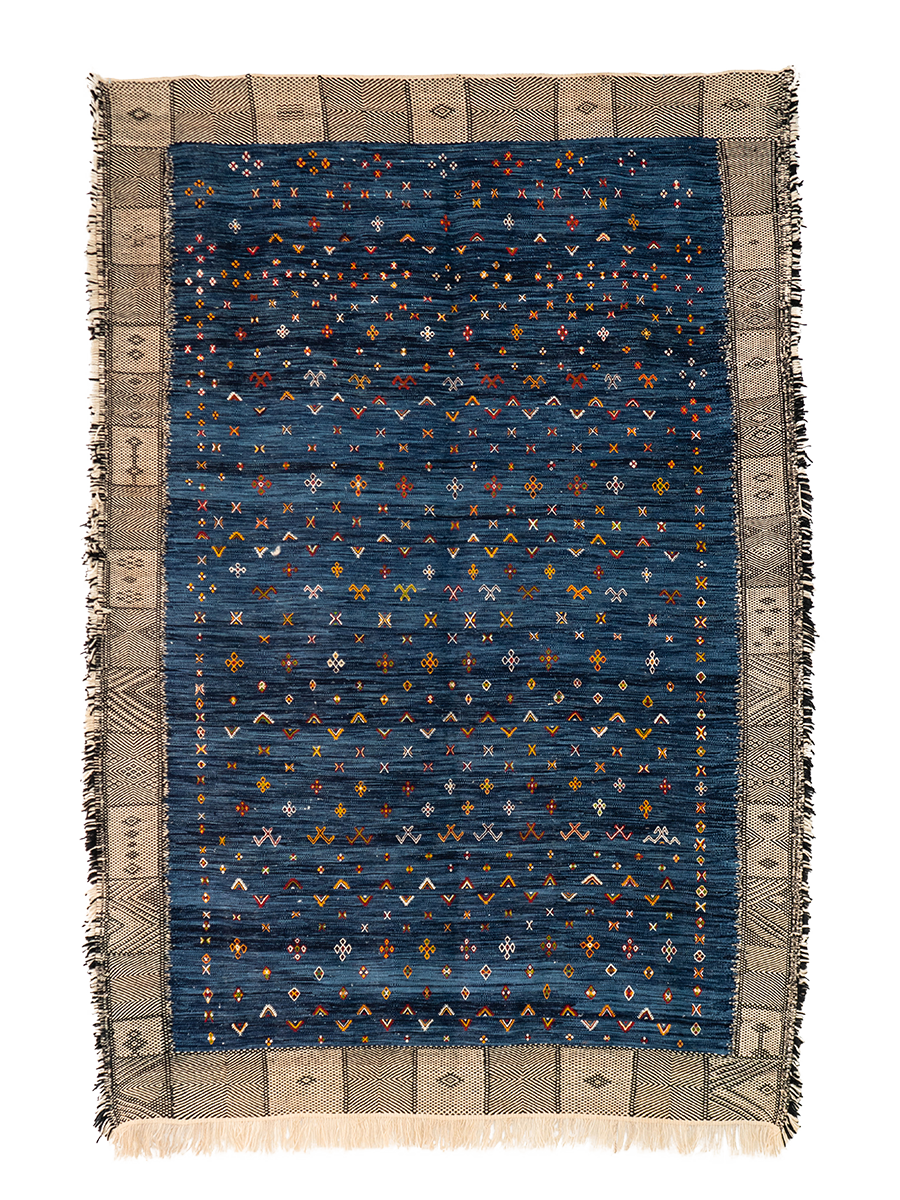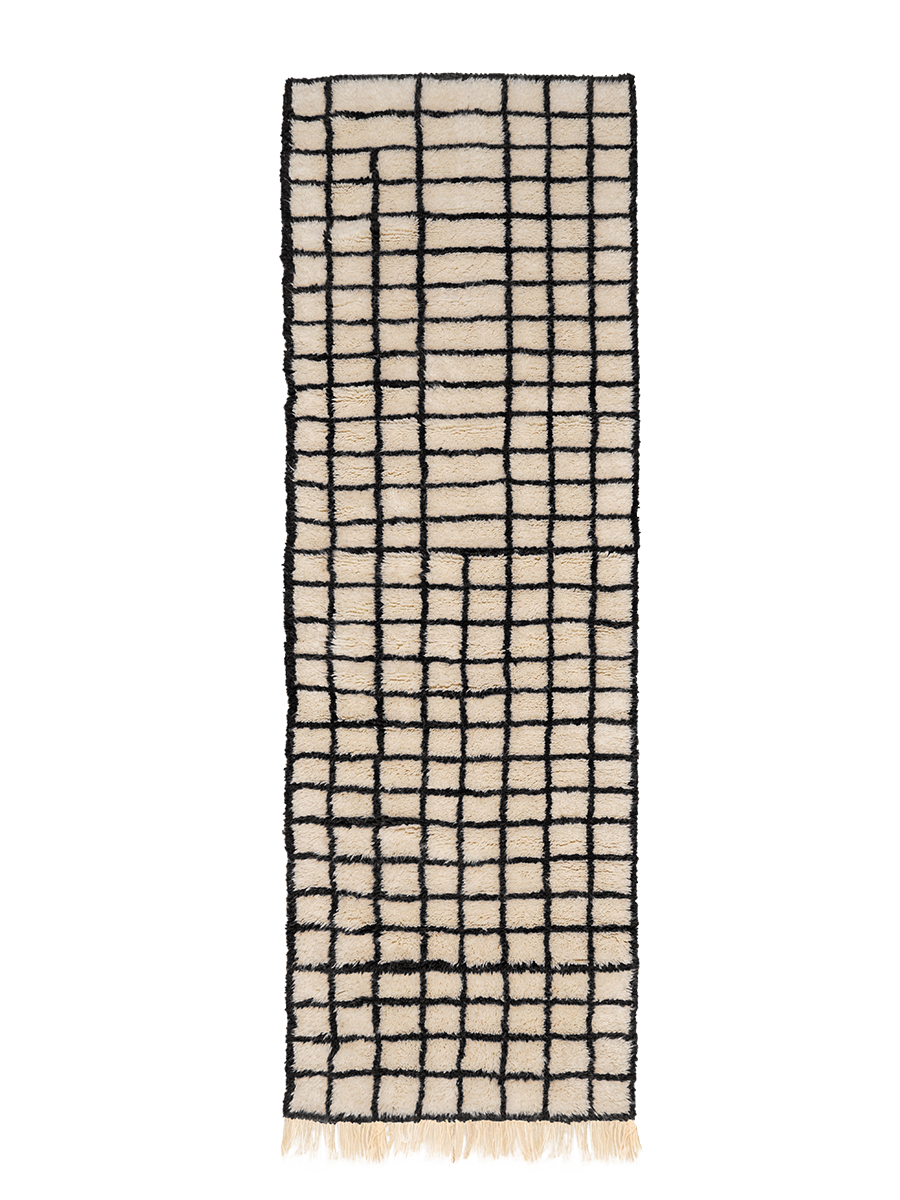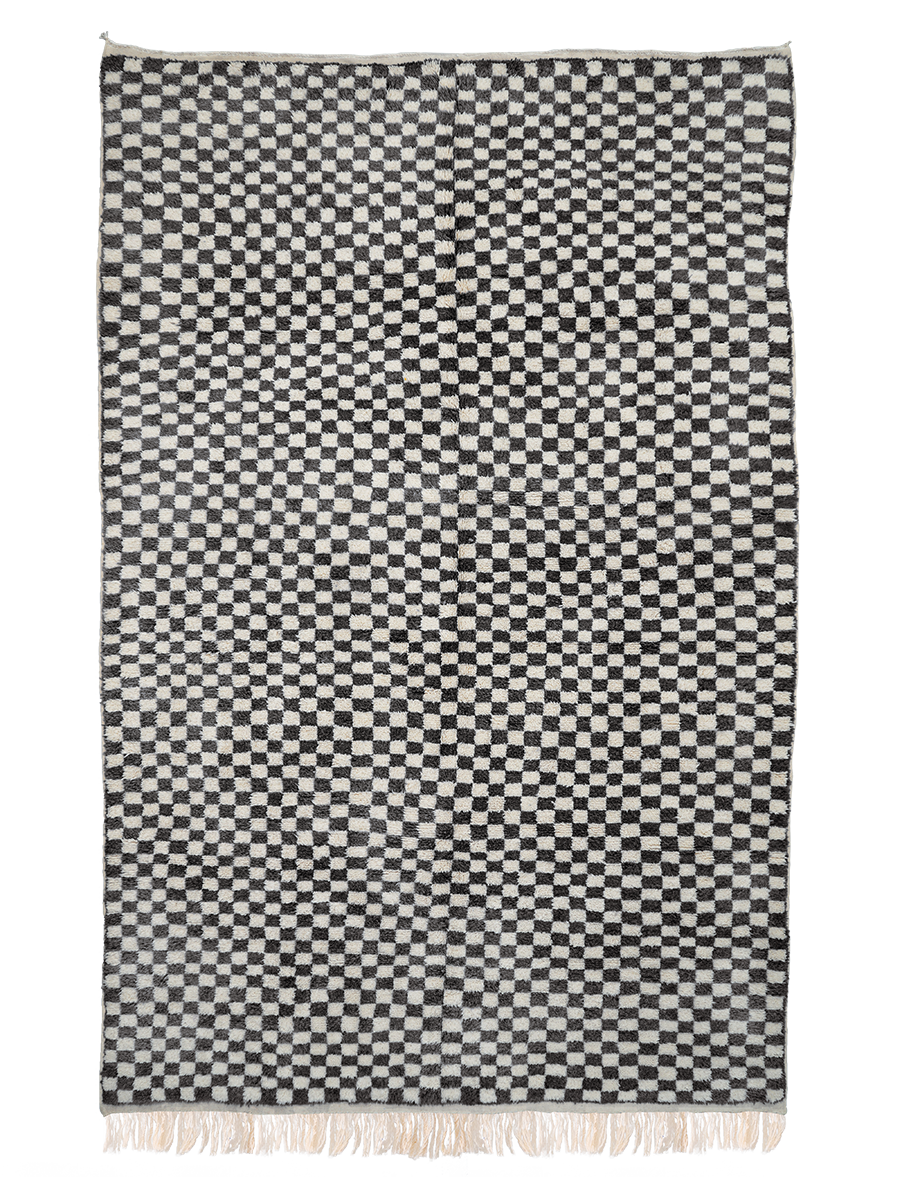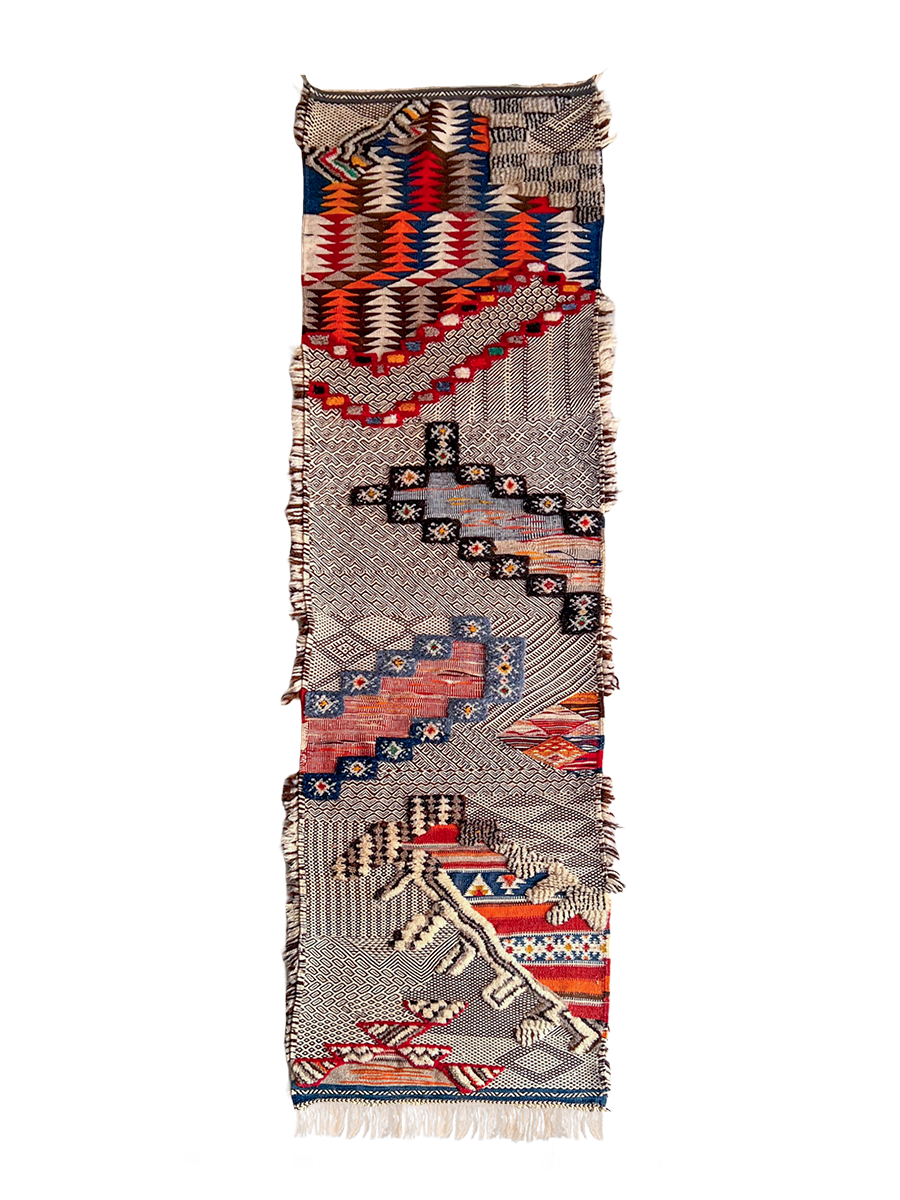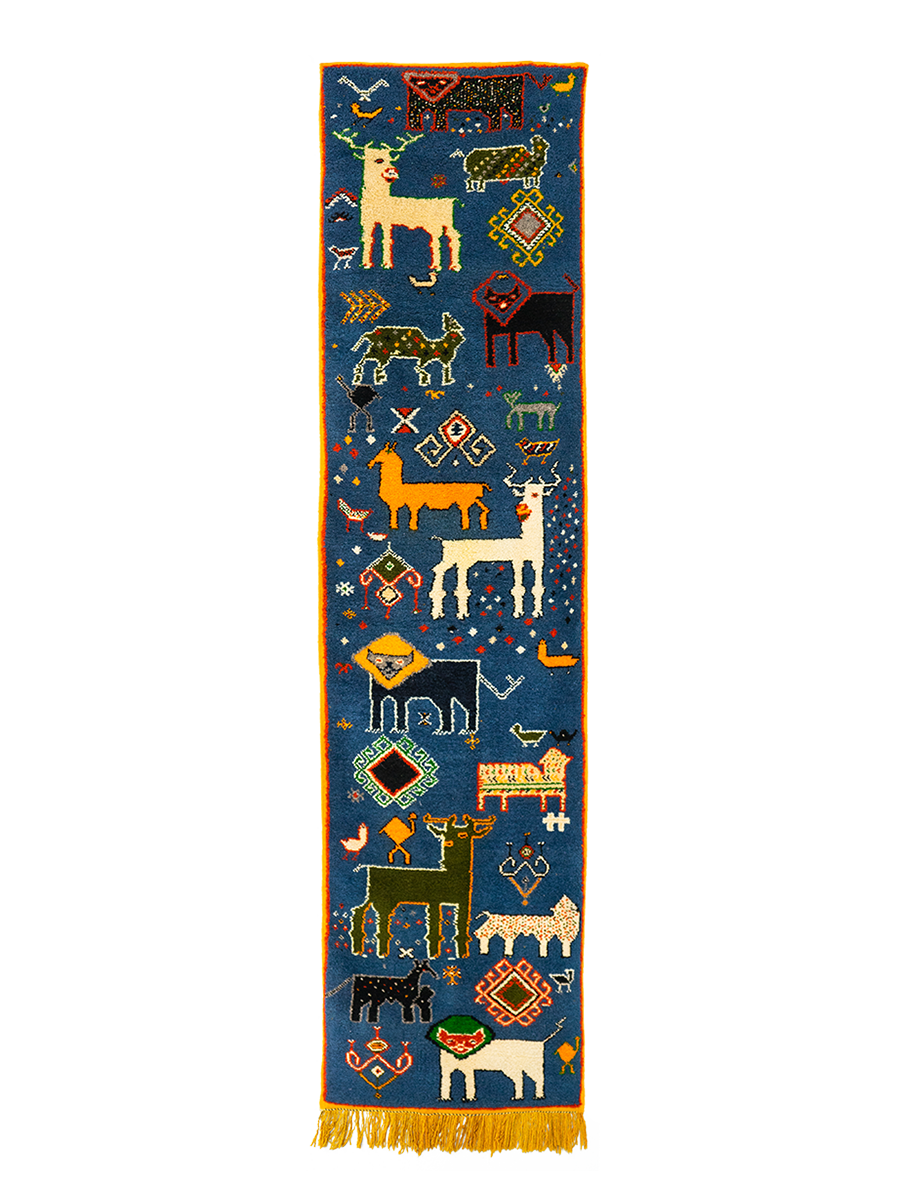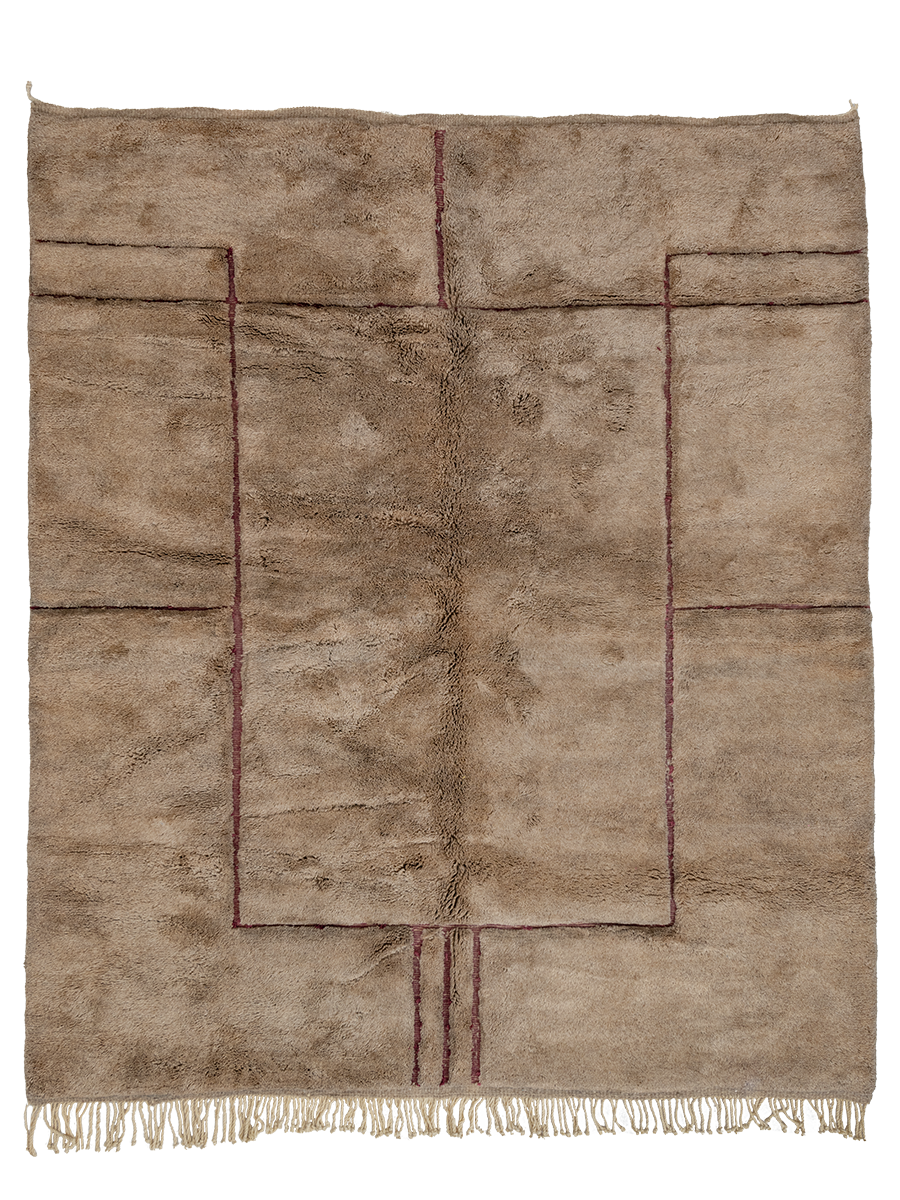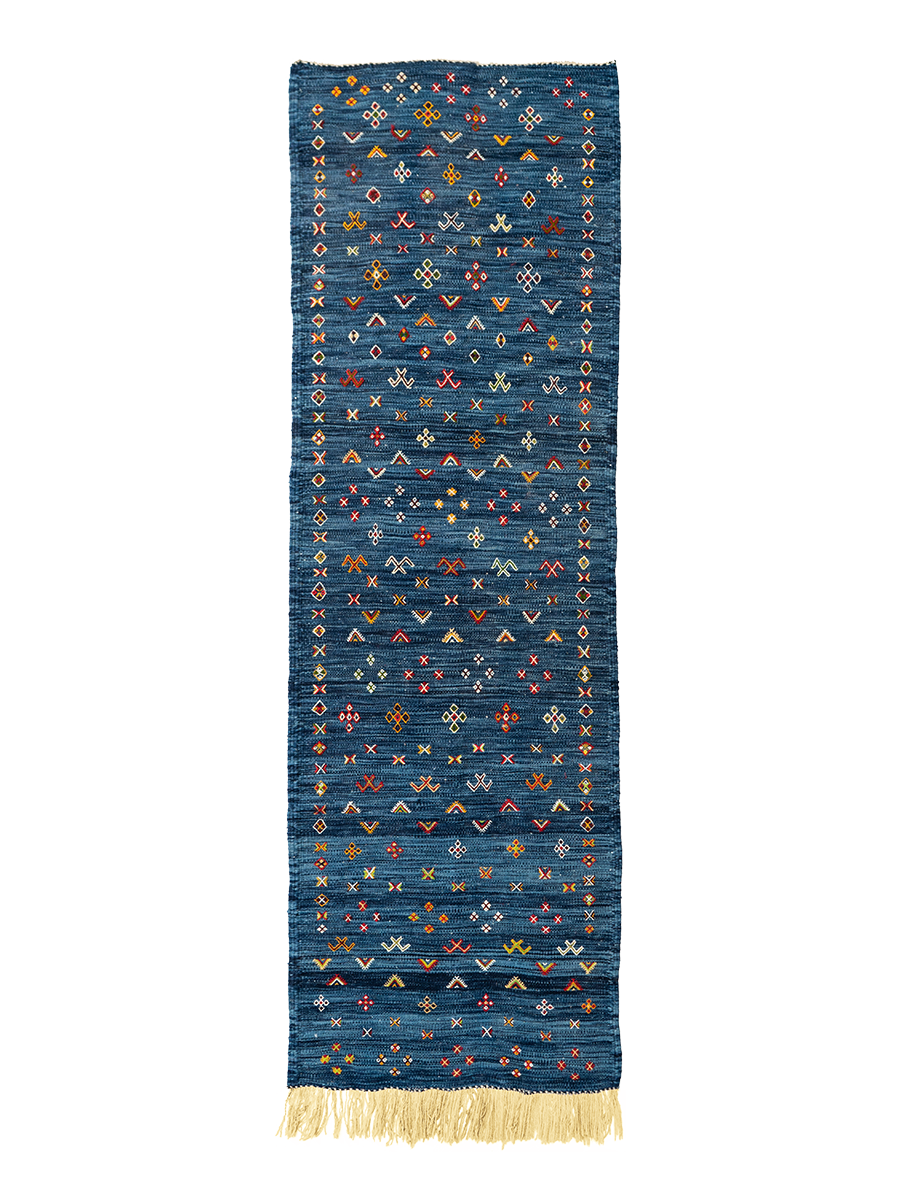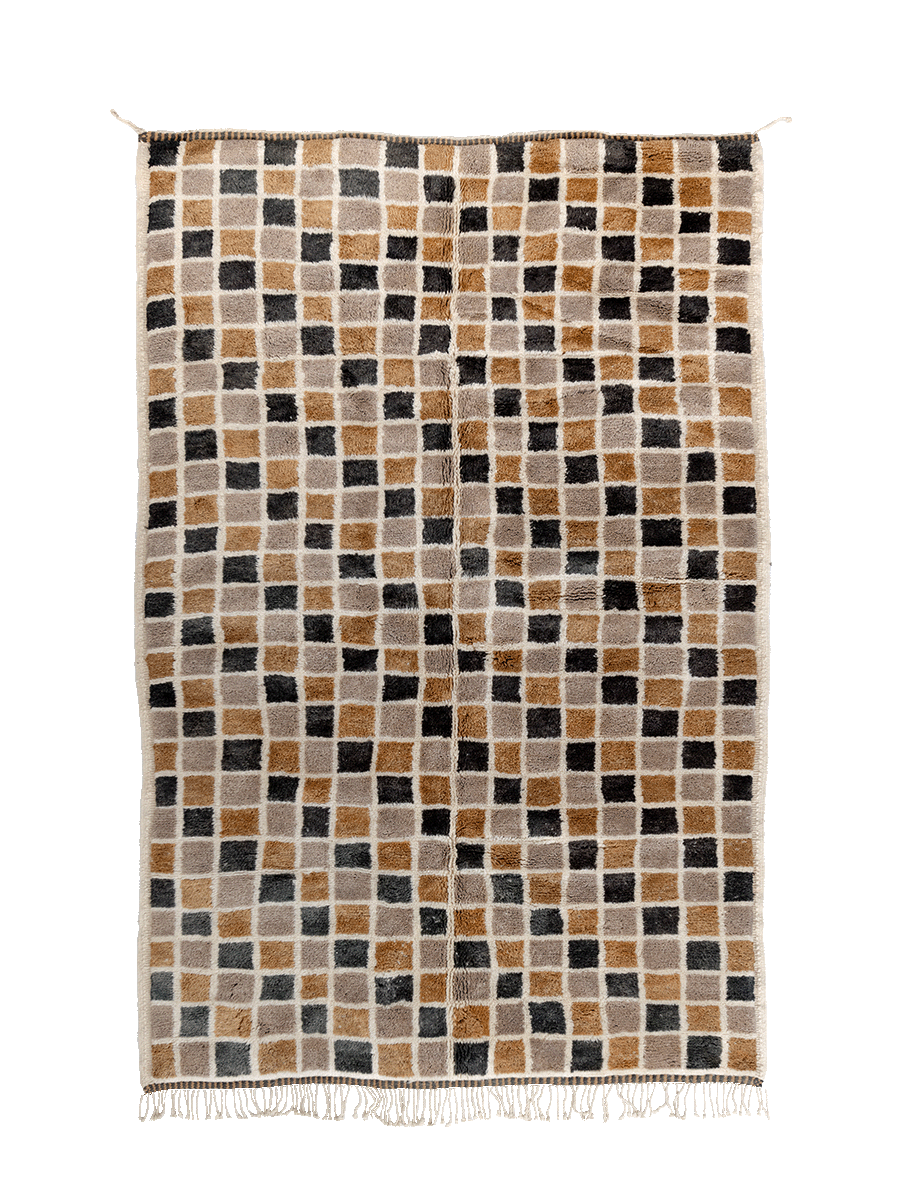Our process
Amazigh women have been handweaving textiles since 600 B.C., passing the craft from generation-to-generation. Each step of the weaving process is rich with tradition and meaning; from harvesting and dyeing the wool, constructing the loom, to the final design of the weave.
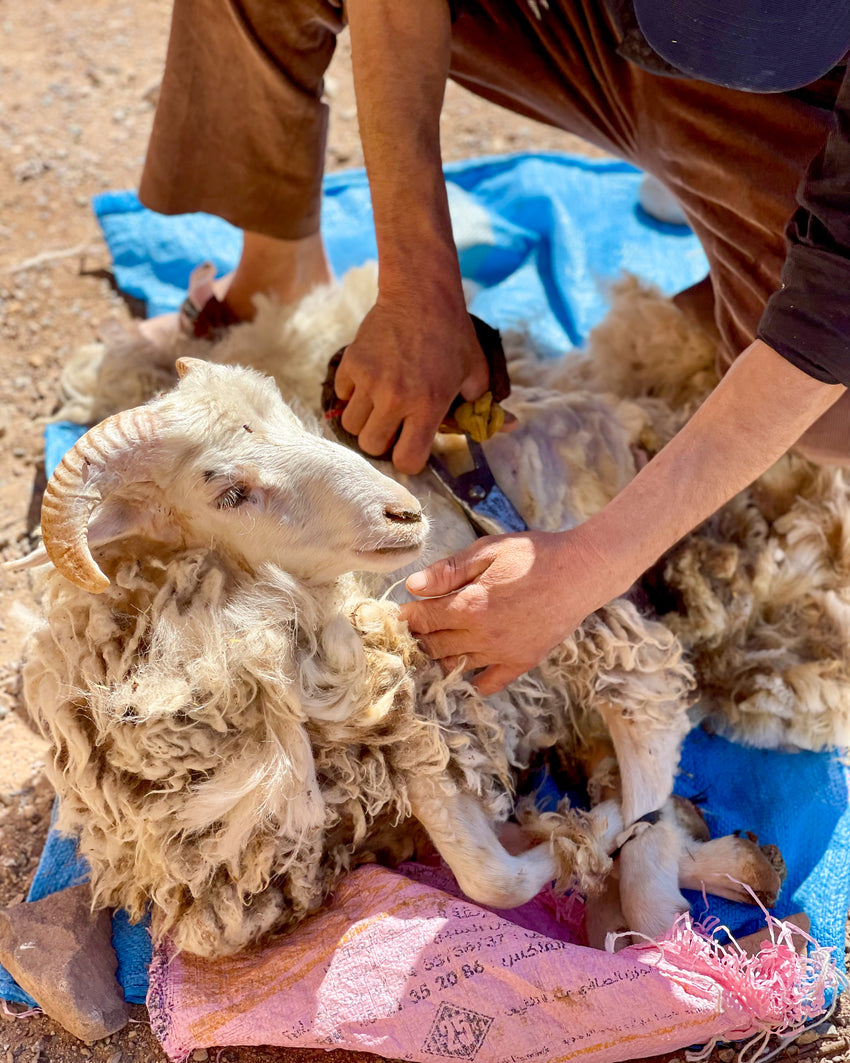
The Wool
Our rugs are made with sheep, goat, or camel wool. Our artisans use “live wool,” which means, the wool it’s taken from live animals, without harm. The wool is healthier and stronger this way.
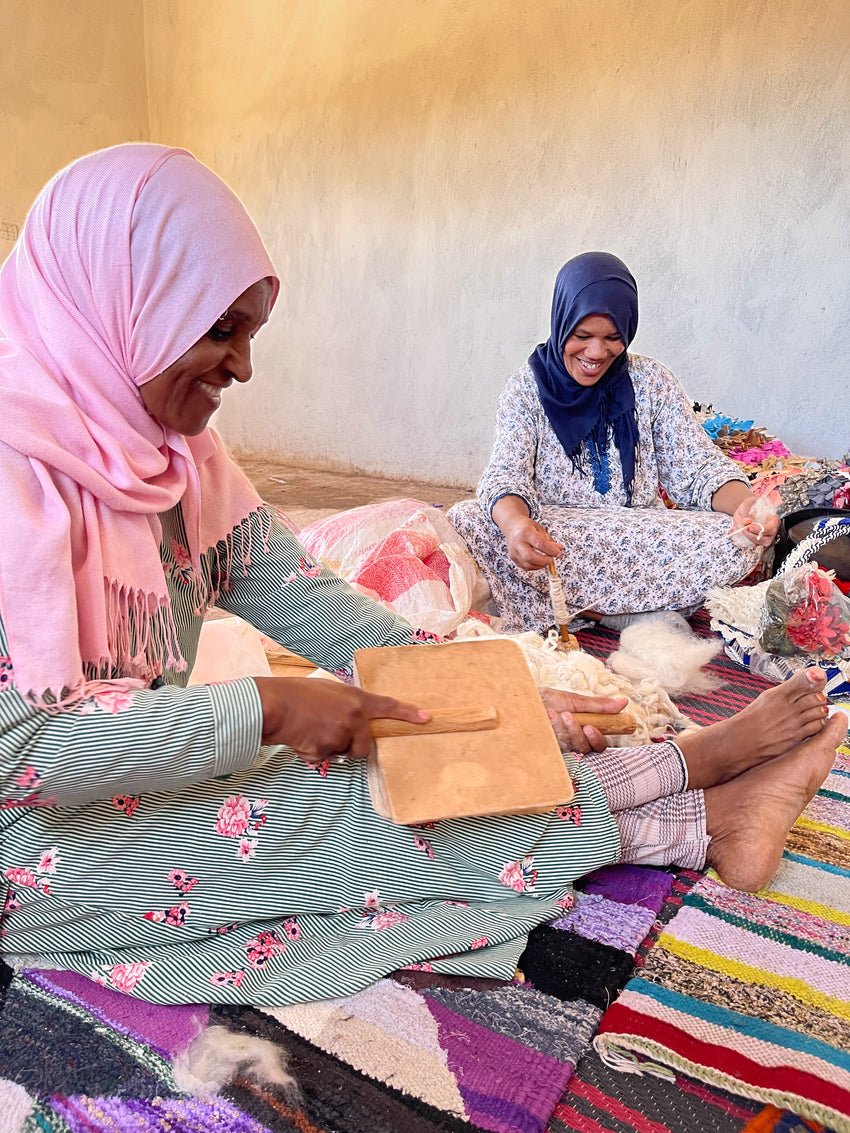
Wool Preparation
After the wool is sheared from the animal, the artisans wash, card, brush, and spin it into yarn. Every step of this process is done by hand.
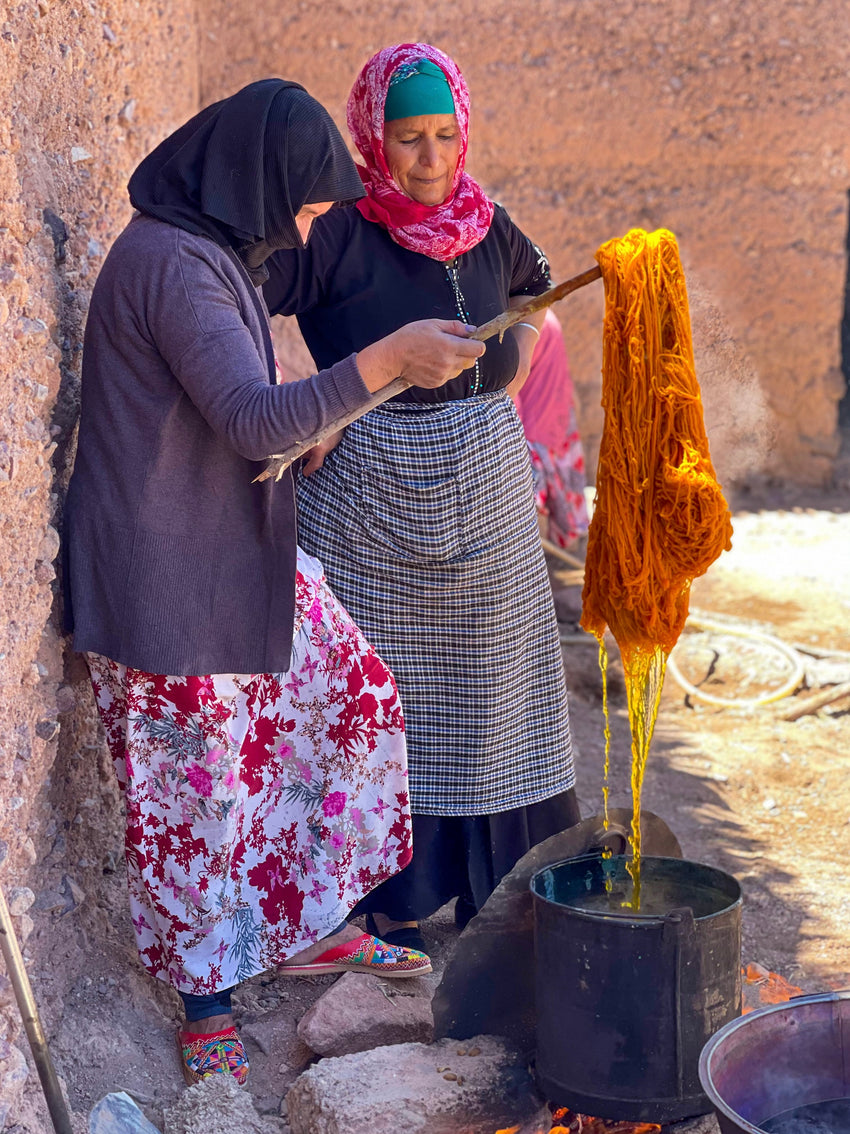
Dyeing
Our artisans usually dye their wool themselves using local, naturally sourced spice, plant, and herb blends. For example, henna leaves create an earthy red while pomegranate peels make a brighter red. Saffron and chamomile flowers both make yellows. Olive leaves make light green and walnut peels make brown.
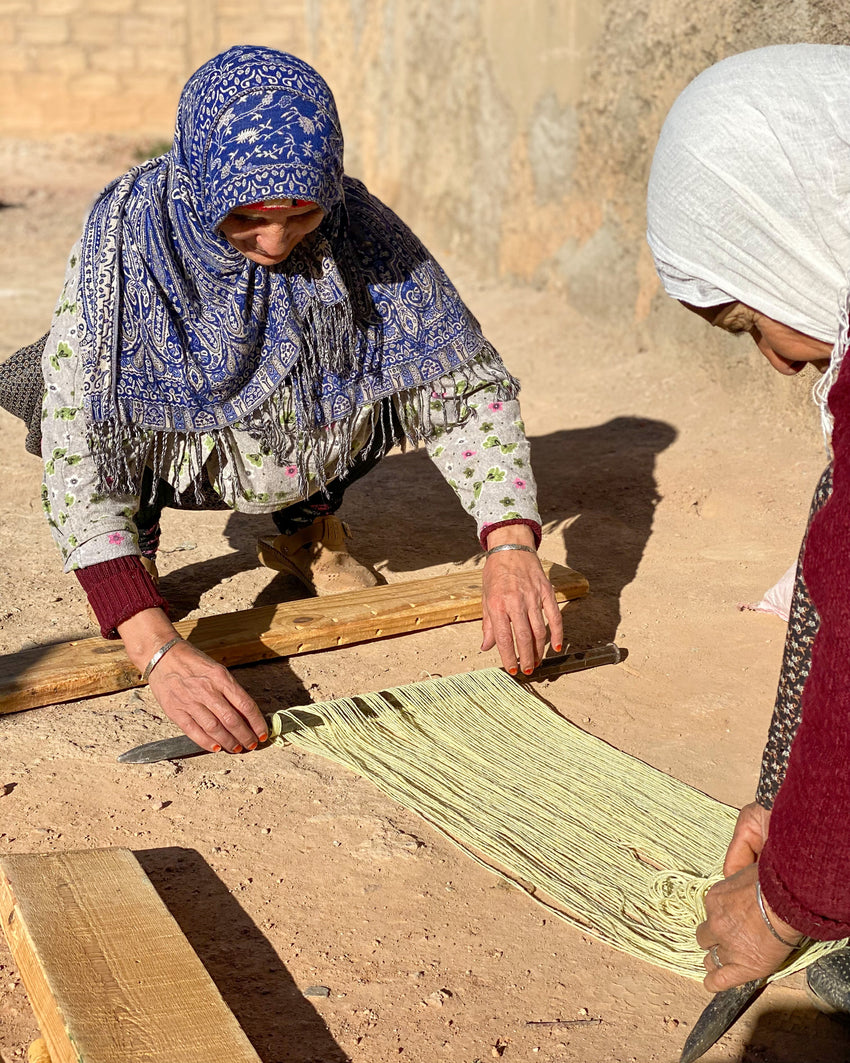
The Loom
Each textile is made on a vertical loom. These looms are constructed by hand and treated with traditional rituals to protect the loom and the rugs from evil. One common ritual involves breaking a piece of sugar against one side of the structure, and a date on the other.
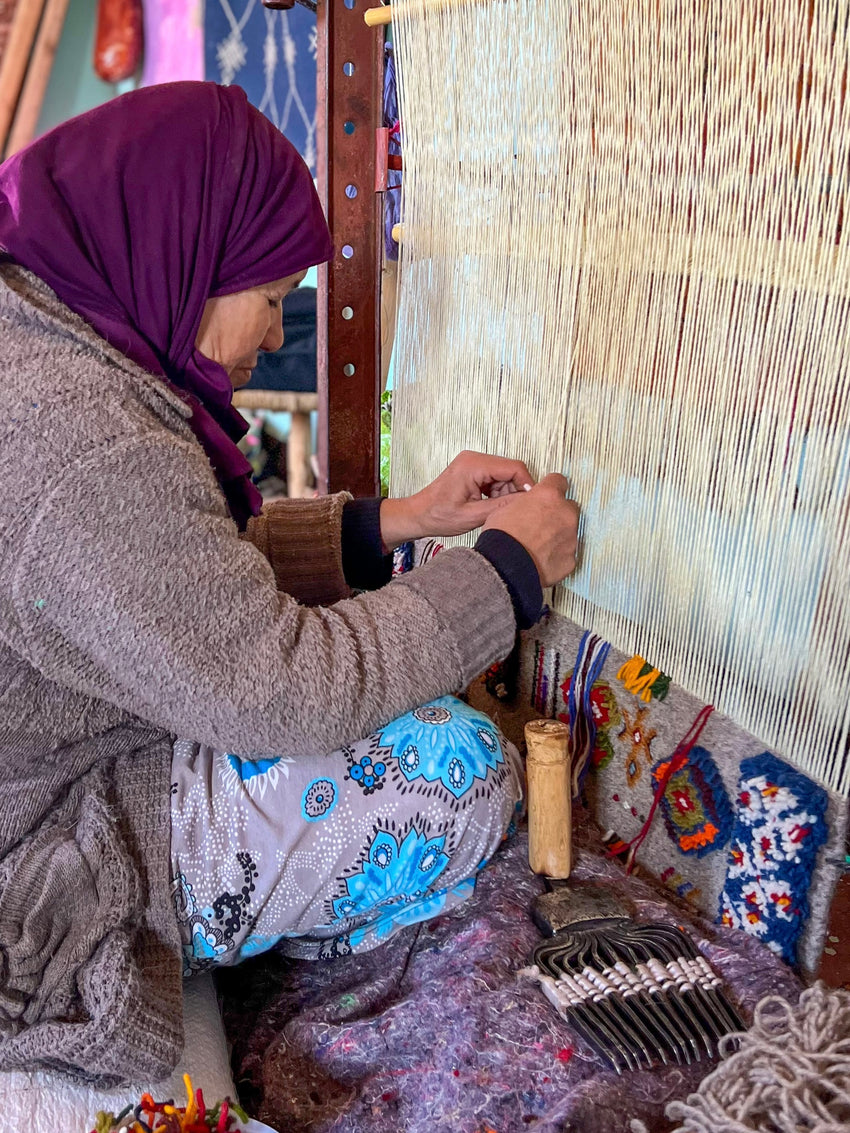
Knot by Knot
Depending on the size of the loom and weave, up to five women will sit at one loom and begin the weeks-long process of building a rug—one knot at a time. On average, each rug contains 50,000 knots.
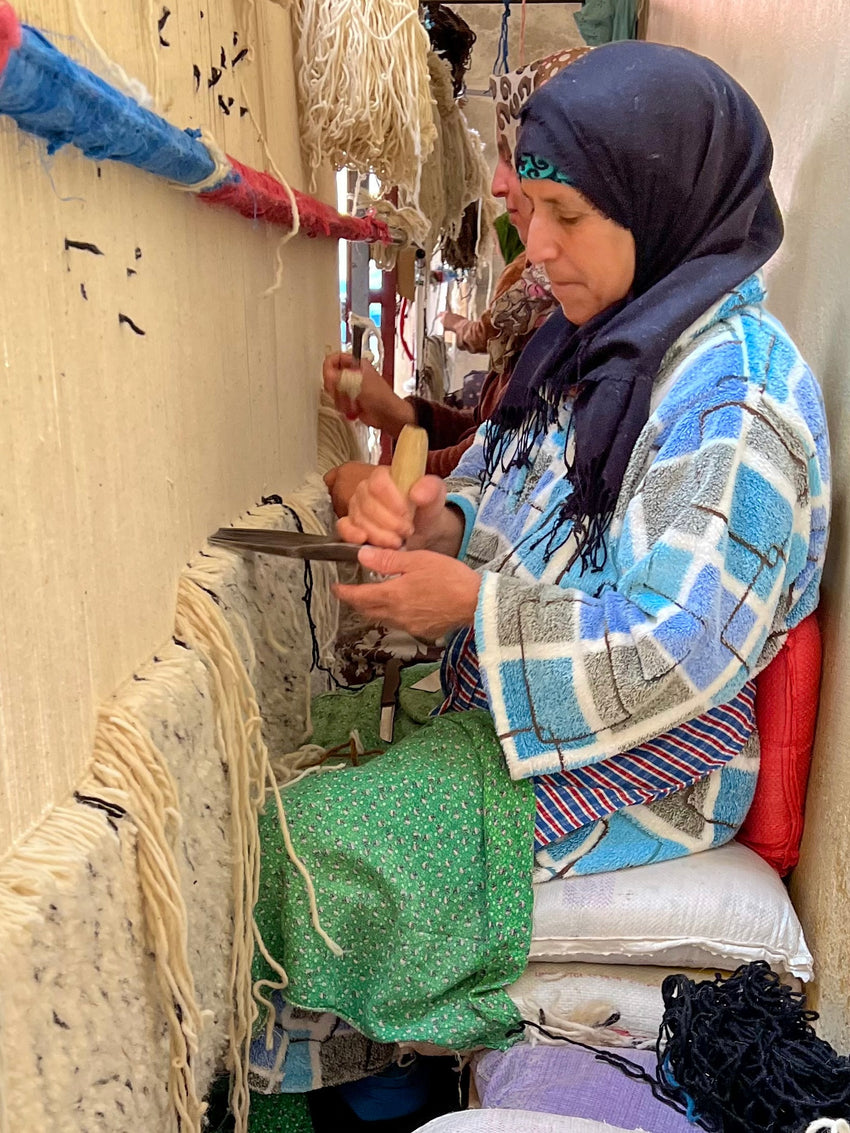
Hammer Comb
After each row of knots is tied across the length of the loom, a pronged hammer combs is used to tightly press the weave of the rug.
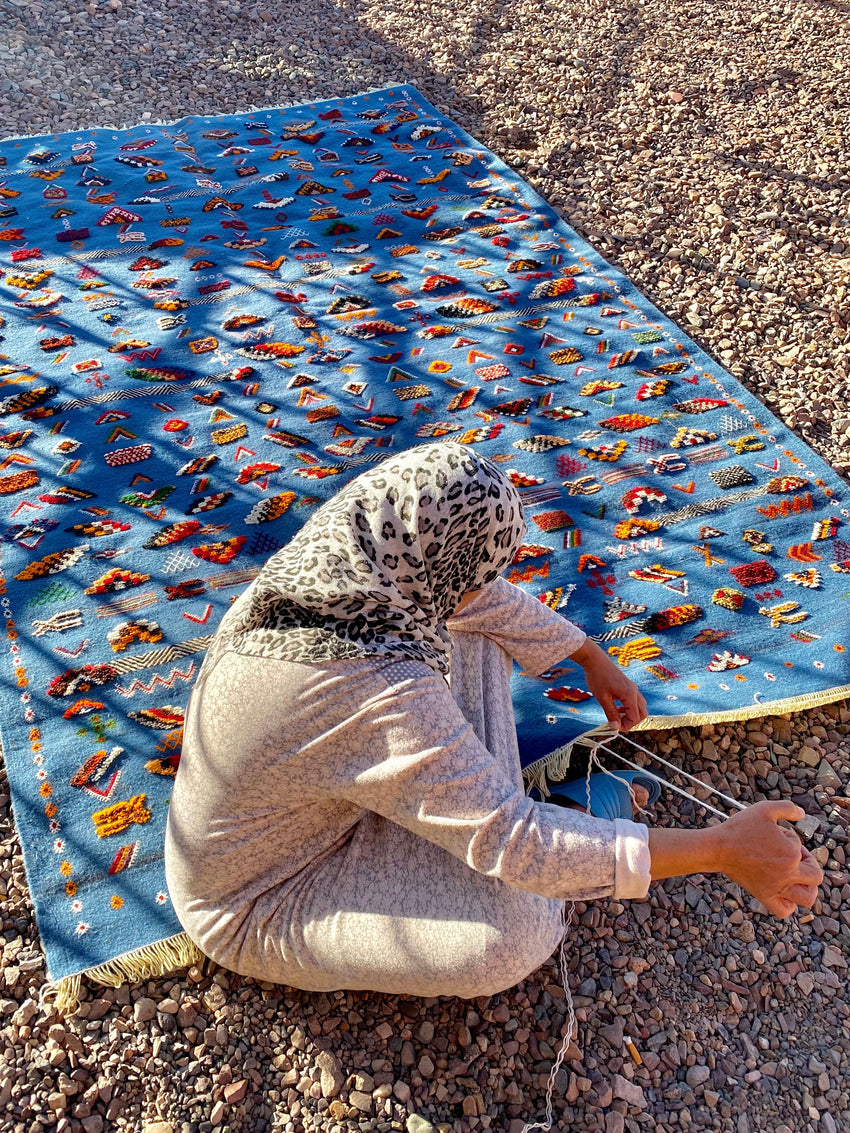
Cutting From the Loom
Once the weave is completed, it must be removed from the loom. With tradition passed down through generations, the artisans expertly cut the rug from the loom and hand tie the tassels.
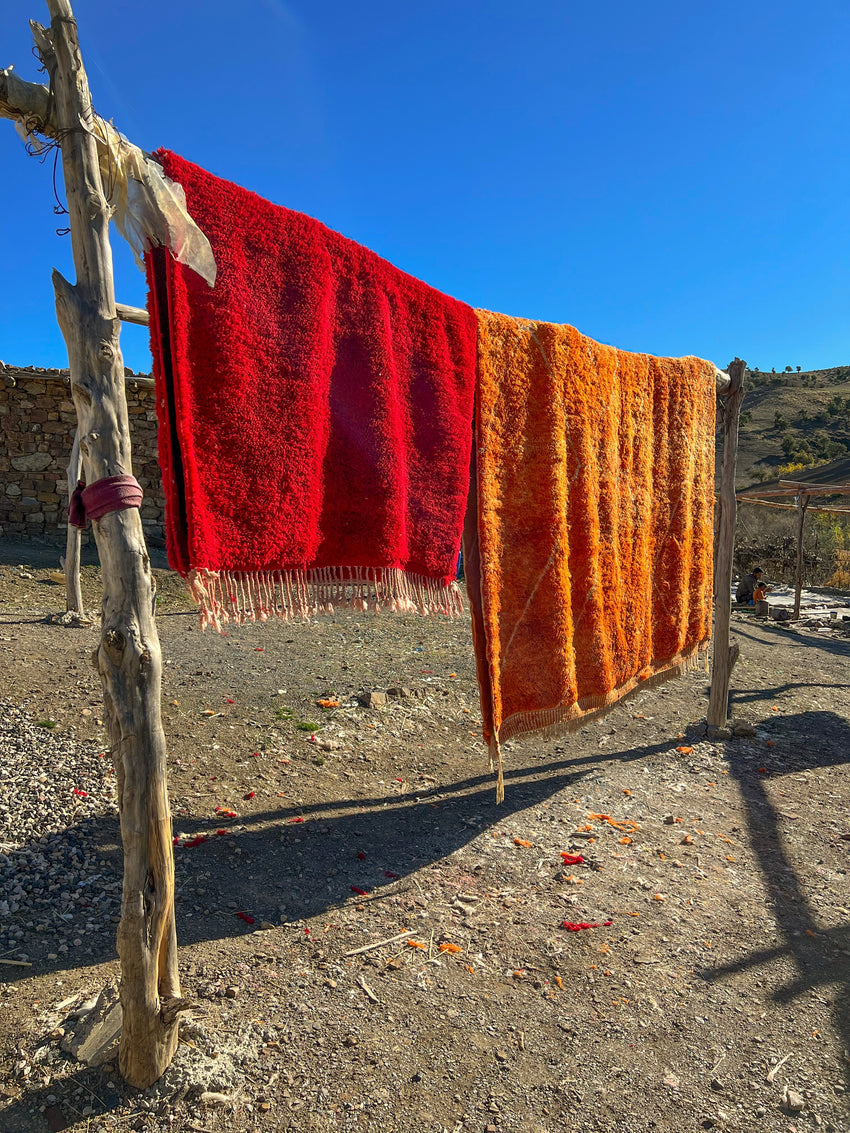
Washing and Drying From the Sun
Finally, the finished rugs are washed with water, scrubbed clean, and dried in the Moroccan sun.








